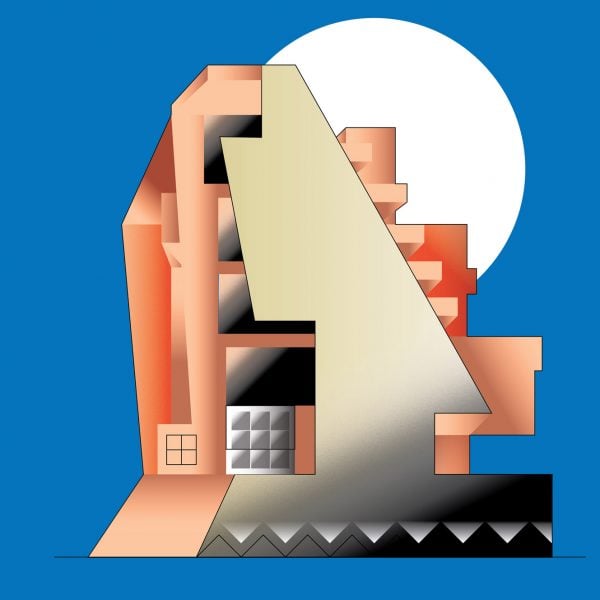We continue our 21st-Century Architecture: 25 Years 25 Buildings series with Grafton Architects’ concrete university campus in Lima, Peru, a building that set a new standard for urban higher-education environments.
Completed in 2015, the University of Engineering and Technology (UTEC) campus in Lima paved the way for Grafton Architects’ Pritzker win, which would come five years later.
More than that, it was the harbinger of a new approach to designing spaces for higher education and an exemplar of harnessing local weather conditions that has lost none of its relevance in the years since.
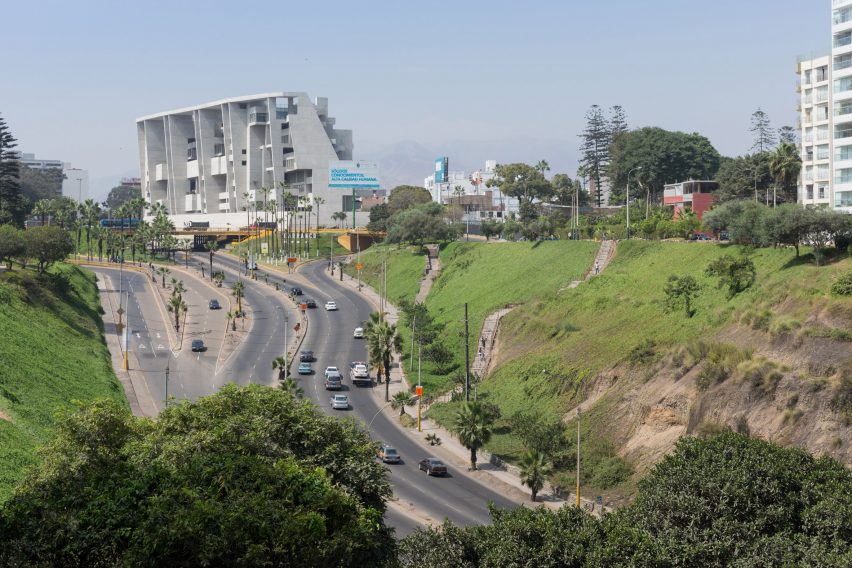
Studio founders Yvonne Farrell and Shelley McNamara designed the UTEC Lima campus with locally based Shell Arquitectos. The building is made up of a series of terraces with clefts and overhangs that shade outdoor circulation space, aiming to create a vertical concrete campus that responds to Peru’s temperate climate.
When designing a campus for a new University of Engineering and Technology in Lima, Peru, the Dublin-based architects Yvonne Farrell and Shelley McNamara thought deeply about how to integrate the wind and the rain,” wrote New York Times reporter Robin Pogrebin.
“It is because of that sensitivity to the natural elements, as well as qualities like their emphasis on collaboration, that the pair was selected to receive the 2020 Pritzker Prize, making them the first two women to share the profession’s highest honor.”
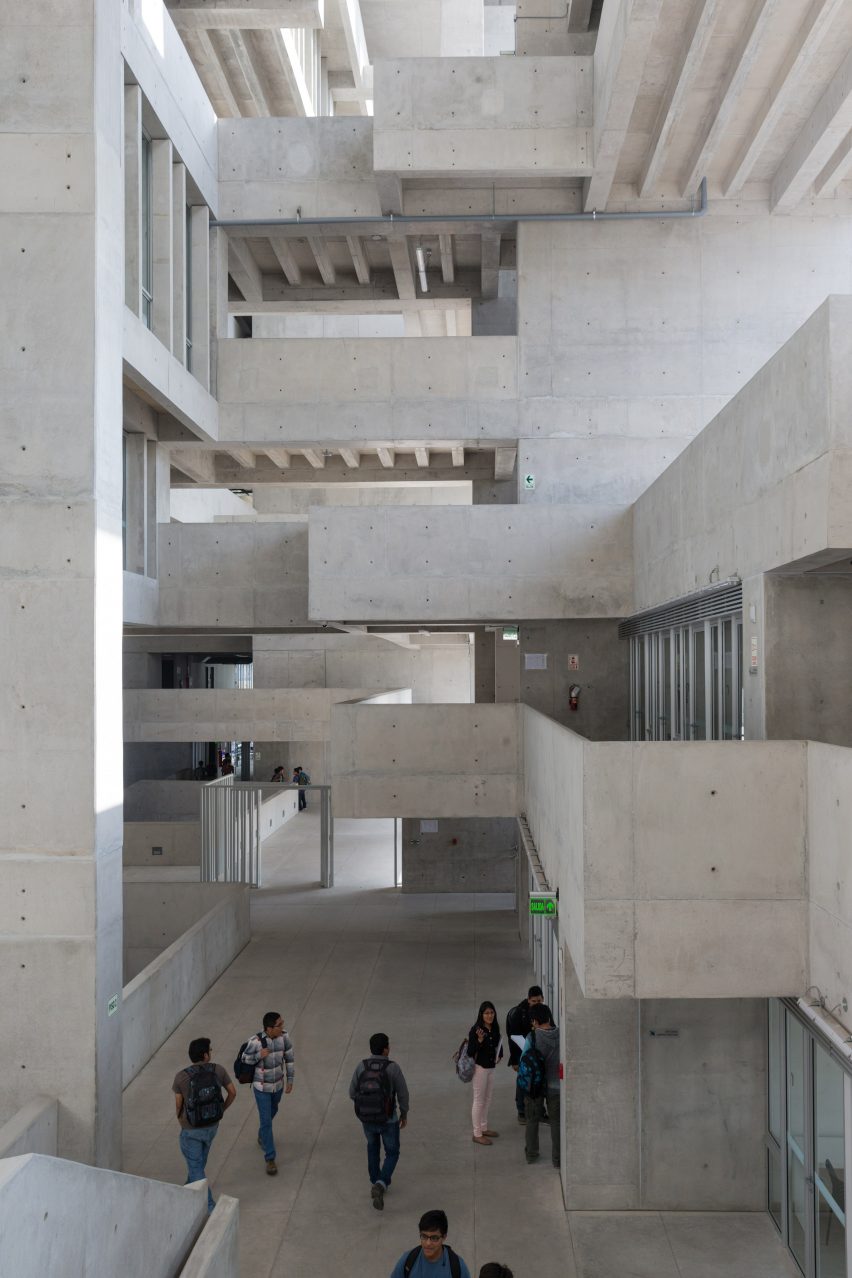
Located at the edge of a deep gorge, the building’s soaring concrete elements create a sculptural building that rises over a busy motorway like a geological landmark.
However, Grafton Architects’ practical response to designing for Peru’s weather and its innovative interpretation of university building typologies are what really caught critics’ attention.
“Like in any other worthwhile building, no written nor photographic rendering can adequately represent such an ambitious artistic creation,” wrote Peruvian architect Frederick Cooper-Llosa in The Architectural Review.
“The complex interplay between the structural and functional elements of the building creates an enticing educational atmosphere inside.”
The concept of a vertical campus defies convention, as does the mix of open and enclosed spacesformer RIBA president Jane Duncan
“From the main entrance hall, in a succession of spaces, balconies and stairs appear suspended between a rich variety of precast beams of different lengths and thicknesses,” he continued.
The monolithic campus won the inaugural RIBA International Prize in 2016, described by judges as a “modern day Machu Picchu”.
Celebrating the best new building in the world outside the UK, the newly launched prize was the first time RIBA opened an award to all qualified architects globally rather than only RIBA members.
UTEC beat other notable shortlisted projects such as Zaha Hadid Architect’s Heydar Aliyev Center and David Chipperfield Architects’ Museo Jumex.

“Grafton Architects have created a new way to think about a university campus, with a distinctive vertical campus structure responding to the temperate climatic conditions and referencing Peru’s terrain and heritage,” said the RIBA International Prize jury, headed by British architect Richard Rogers.
UTEC is an exceptional addition to the city of Lima and a project that will inspire other architects and universities all over the world,” added Jane Duncan, who was RIBA president at the time.
“Grafton Architects have created an innovative new model for a university campus that is highly responsive to its local environment and community,” she continued.
“The concept of a vertical campus defies convention, as does the mix of open and enclosed spaces, but both are key to the success of this building visually and spatially.”
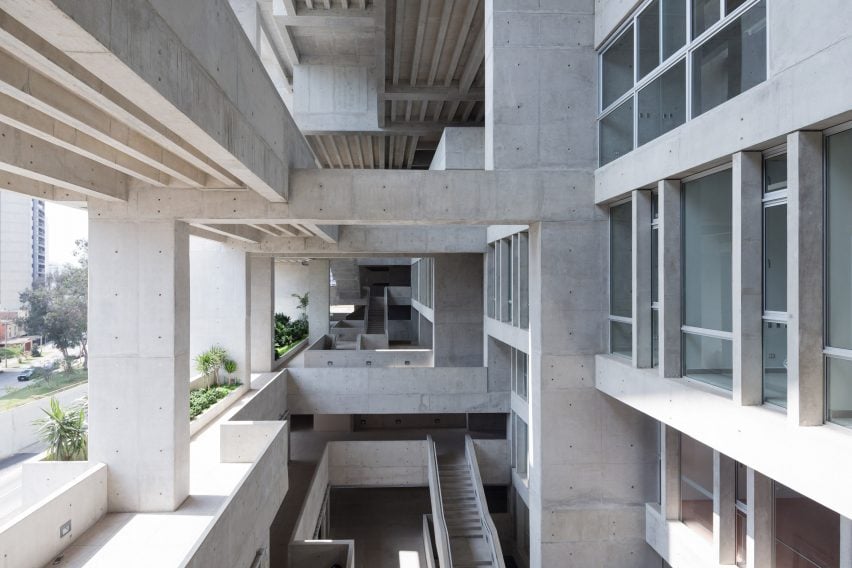
Although it was not the first project to land Grafton Architects an international prize, with the studio winning the 2008 World Building of the Year Award for the Universita Luigi Bocconi School of Economics campus in Milan, UTEC started a rapid snowball of awards for the modestly sized Dublin studio.
In addition to the 2020 Pritzker, Farrell and McNamara were awarded the 2020 RIBA Royal Gold Medal for their significant impact on the architecture industry, becoming only the fourth and fifth women laureates in the award’s 171-year history.
They went on to win the Stirling Prize in 2021 and the Mies van der Rohe Award in 2022 for another university building, the Town House for Kingston University in London.
Farrell and McNamara founded Grafton Architects in Dublin in 1978 and for nearly 25 years worked solely on projects in Ireland.
The pair worked tirelessly before receiving international acclaim. In an interview with Dezeen last year, they described the UTEC commission as one of the greatest moments in their decades-long career.
“I don’t find that there’s one career highlight, but in terms of opportunity, I would say that [Universita Luigi Bocconi] and [UTEC] were shots in the dark that catapulted us to another scale,” said McNamara.
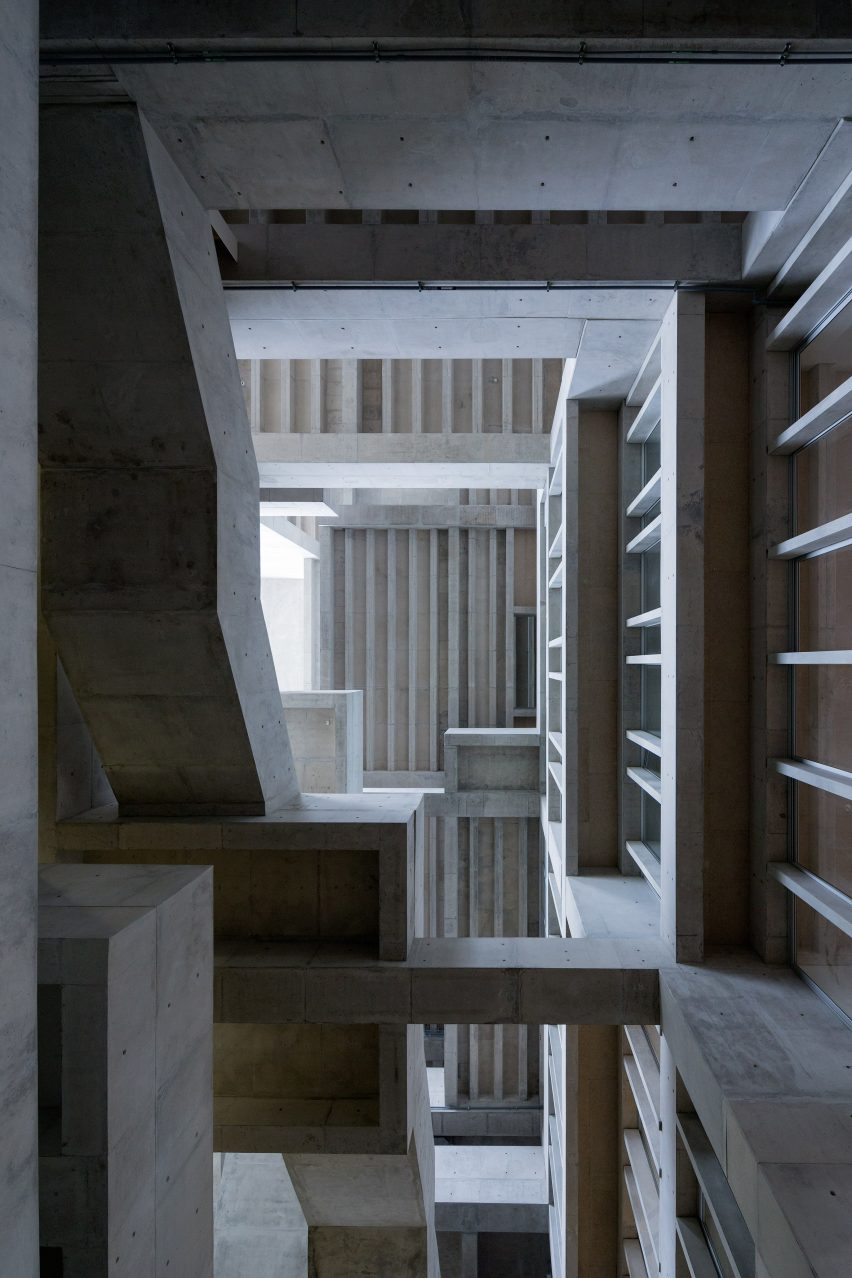
Sandra Barclay and Jean Pierre Crousse, founders of Lima-based architecture studio Barclay & Crousse, also credited the UTEC building with changing the global view of architecture in Peru.
Barclay and Crousse won the 2018 Mies Crown Hall Americas Prize for a fragmented university building in rural northern Peru made from wood-textured concrete.
After conflict in Peru in the 1980s and ’90s, Barclay and Crousse claimed in an interview with Dezeen that Peruvian architects have gained the confidence to build high-quality architecture thanks to Grafton Architects’ university building.
No written, nor photographic rendering can adequately represent such an ambitious artistic creationFrederick Cooper-Llosa in The Architectural Review
“Grafton are not the first foreign architects to work in Peru – there are lots of buildings by foreign architects,” Crousse said.
“But Grafton were the first to try to understand the climate, the geography, the landscape, to try to use materials that are easily used here,” he continued. “To be global from local conditions, with this generosity of free space.”
“For the first time, we could show that generosity was possible in Peru by looking at that building.”
In the 10 years since its completion, UTEC remains an influential example of university architecture and a stand-out project in the portfolio of one of the world’s most decorated architecture studios.
Did we get it right? Was Grafton Architects’ UTEC Lima campus the most significant building completed in 2015? Let us know in the comments. We will be running a poll once all 25 buildings are revealed to determine the most significant building of the 21st century so far.
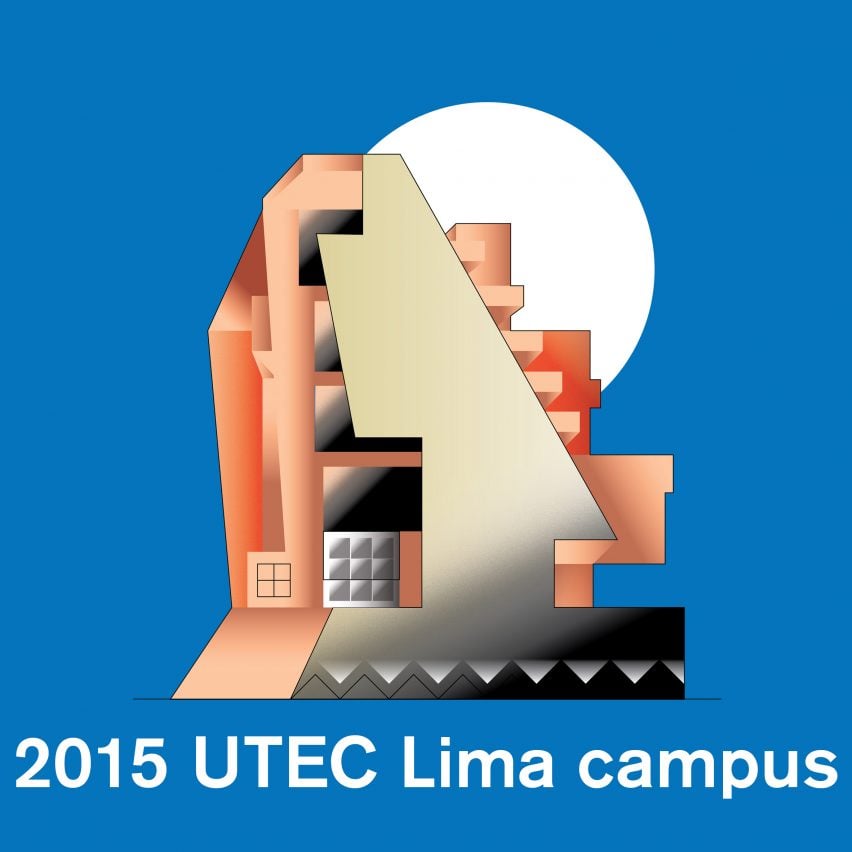
This article is part of Dezeen’s 21st-Century Architecture: 25 Years 25 Buildings series, which looks at the most significant architecture of the 21st century so far. For the series, we have selected the most influential building from each of the first 25 years of the century.
The illustration is by Jack Bedford and photography is by Iwan Baan.
21st Century Architecture: 25 Years 25 Buildings
2000: Tate Modern by Herzog & de Meuron
2001: Gando Primary School by Diébédo Francis Kéré
2002: Bergisel Ski Jump by Zaha Hadid
2003: Walt Disney Concert Hall by Frank Gehry
2004: Quinta Monroy by Elemental
2005: Moriyama House by Ryue Nishizawa
2006: Madrid-Barajas airport by RSHP and Estudio Lamela
2007: Oslo Opera House by Snøhetta
2008: Museum of Islamic Art by IM Pei
2009: Murray Grove by Waugh Thistleton Architects
2010: Burj Khalifa by SOM
2011: National September 11 Memorial by Handel Architects
2012: CCTV Headquarters by OMA
2013: Cardboard Cathedral by Shigeru Ban
2014: Bosco Verticale by Stefano Boeri
2015: UTEC Lima campus by Grafton Architects
This list will be updated as the series progresses.

